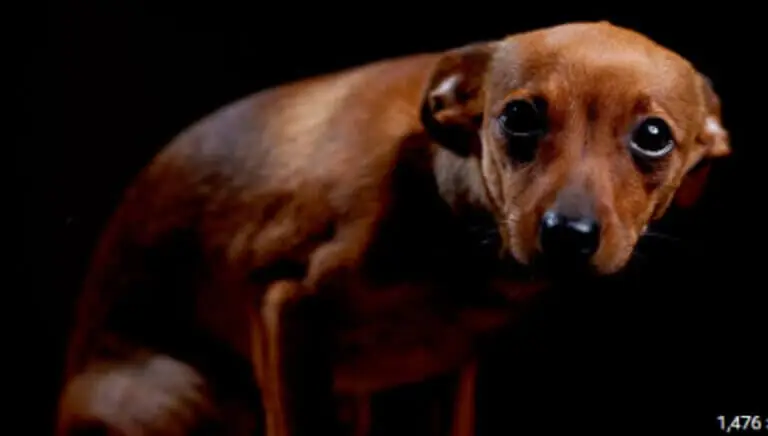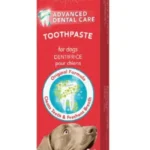Have you ever reached out to pet your furry friend, only to have them flinch or pull away? Their reaction can be puzzling and concerning. Is it normal for my dog to flinch when I pet him? Why does my dog flinch when I touch him? We will explore the various reasons behind this common question.
Understanding Your Dog’s Signals
Why does my dog flinch when I touch him? Dogs communicate primarily through body language. So, each wag, yawn, or flinch is part of your dog’s broader vocabulary to express their feelings and needs. Recognizing signs of fear, discomfort, or pain is especially important in nurturing a positive relationship with your dog.
If you are wondering why my dog cowers when I pet him, It could be a sign of fear or unease. And why does my dog softly bite my hand when I pet him? It’s possible they are showing discomfort or trying to communicate a boundary in a way they understand. Paying attention to these cues can ensure your interactions are loving and respectful, fostering a deeper bond with your furry friend.
Why Dogs Flinch
There are many reasons why a dog might flinch when touched, ranging from physical pain to fear and anxiety. This section will explore the key reasons behind this behavior, offering insight into how you can help your furry friend feel more comfortable and secure. Why does my dog flinch when I touch him? It could be because of;
A. Pain
Pain is a common cause of flinching in dogs. If your dog flinches when touched all over, or if you notice them wince when touched but seem fine at other times, it could indicate discomfort or pain. This may also manifest as flinching and wobbling, indicating a balance issue or discomfort in certain areas, like flinching when touched on the side.
These signs shouldn’t be ignored as they can signify various health issues, from minor injuries to more severe conditions. Consult a veterinarian for a proper diagnosis and treatment plan to address underlying health concerns.
B. Fear and Anxiety
Negative experiences, lack of socialization, or naturally shy personalities can lead to fear and anxiety in dogs, contributing to their tendency to flinch. Key indicators include startling when petted, flinching when you raise your hand, or flinching suddenly without a clear trigger.
These responses can be a dog expressing unease or anticipating discomfort based on past experiences. For owners observing these signs, it’s beneficial to consider consulting with a certified animal behaviorist. They can provide training and behavior modification techniques tailored to your dog’s needs to reduce anxiety and improve overall well-being.
C. Discomfort and Other Factors
Sometimes, a dog’s flinching behavior might be attributed to other factors such as disorientation, vision problems, or reactions to recent traumatic events. For example, if those areas are especially sensitive or uncomfortable, a dog might flinch when you rub his back or touch her back.
It’s essential to consider these possibilities and to seek professional advice. A veterinarian or an animal behaviorist can offer valuable insights and guidance, helping to discern the root cause of your dog’s distress and how best to address it.
D. Sensory Sensitivities
Another factor to consider when a dog flinches at touch is sensory sensitivities. Much like humans, dogs can have areas on their body that are more sensitive than others, or they may be susceptible to certain types of touch.
Some dogs might flinch at a light touch but not at a firmer, more assured petting, as the lighter touch can feel ticklish or startling. Additionally, dogs with a history of trauma or abuse may develop heightened sensitivities, making them more prone to flinch.
E. Area-Specific Flinching in Dogs
Not all flinching in dogs is equal—sometimes, a dog may only flinch when touched in specific areas, which can provide essential clues to their overall well-being. Area-specific flinching often points to localized pain, sensitivity, or discomfort in that region of the body.
For example, a dog that flinches when its hind legs are touched might suffer from joint pain or arthritis, which is common in older dogs. Similarly, flinching upon touching the head or ears could indicate dental pain, ear infections, or headaches.
Recognizing these patterns is crucial for pet owners, as it can help identify potential health problems early on. Consult a veterinarian upon noticing consistent area-specific flinching, which is vital to diagnose and treat any underlying conditions, ensuring your dog’s health and comfort.
How Can I Tell What is Causing the Flinching?
We have explored reasons behind ‘why does my dog flinch when i touch him?’ Differentiating between the causes of your dog’s flinching requires a combination of keen observation, patience, and possibly professional assistance. One effective approach is to monitor when and where the flinching occurs. Pain or discomfort may be the culprit if it is consistent in specific situations or when touched in particular areas. Conversely, fear or anxiety might be at play if flinching happens in response to sudden movements or in new environments.
Another method is to pay attention to other signals your dog may display. Are there signs of physical distress, such as limping or reluctance to move? Are you noticing behavioral changes like hiding, decreased appetite, or aggression? These can provide clues to the underlying issue.
In cases where the cause is not apparent, consulting with professionals is a crucial step. Veterinarians can conduct examinations to rule out or confirm any health-related causes, while animal behaviorists can assess behaviors to identify fear or anxiety-related issues. Through a process of elimination and professional guidance, you can begin to understand the reason behind your dog’s flinching and take appropriate steps to address it, ensuring a happier and healthier life for your furry friend.
Responding to a Flinching Dog
Discovering that your dog flinches at your touch can be disheartening and may leave you concerned about their wellbeing. Knowing how to respond to this behavior is crucial for their comfort and your relationship. This part of our guide will explore effective strategies and tips for responding to a flinching dog, aiming to nurture a secure and trusting bond between you and your furry companion.
A. Be Gentle and Patient
When you notice your dog flinching, it’s critical to approach them with a gentle and patient demeanor. Quick or forceful interactions can exacerbate their fear, leading to behaviors like jumping away or cowering.
Flinching could be their way of communicating discomfort or feeling overwhelmed by touch. Speak softly and move slowly to avoid startling them further, showing them that they can trust you to be understanding of their needs.
B. Respect Your Dog’s Boundaries
Understanding and respecting your dog’s personal boundaries can significantly help build a stronger, more trusting relationship. Encourage your dog to initiate contact when they feel comfortable doing so, and pay attention to the signals they’re sending about their comfort levels.
If your dog softly bites your hand, consider it as their way of communicating discomfort or a polite request for more personal space. Recognizing and respecting these signals can help your dog feel more secure and understood.
C. Seek Professional Help
If your dog continually shows signs of distress, such as flinching or soft biting, it might be time to consult professionals. A veterinarian can help rule out or treat any underlying health issues causing discomfort.
Additionally, a certified animal behaviorist can provide valuable insights into your dog’s behavior, offering guidance and personalized advice to improve their well-being. Professional assistance is crucial in ensuring your dog’s overall health and happiness, helping you understand and respond to their needs more effectively.
What You Can Do
Creating a tranquil and stable environment plays a crucial role in alleviating a dog’s anxiety or discomfort that leads to flinching. Sudden noises, chaotic household settings, or frequent changes in their living situation can heighten a dog’s nervousness.
Strive to keep your home as calm and predictable as possible, offering your dog a safe space to retreat when feeling overwhelmed. This approach not only helps in reducing their overall stress levels but also aids in building confidence in their surroundings, making them less likely to react negatively to touch.
E. Positive Reinforcement Training
Incorporating positive reinforcement training is another effective strategy for addressing flinching. Rewarding your dog for calm and non-flinching behaviors when they usually flinch can gradually reduce this reaction.
Use lean treats, praise, or their favorite toys as rewards to encourage desired behaviors, reinforcing their confidence and trust in you. This method focuses on reducing flinching and strengthens the bond between you and your dog, fostering a more positive and respectful relationship. It is also important to use proper training gear like martingale collars or Jim Hodges collars.
By addressing these additional considerations, you can further understand and mitigate the causes of your dog’s flinching, ensuring their comfort and strengthening your bond.
How Veterinarians Can Help with a Flinching Dog

When it comes to understanding and addressing the flinching behavior of dogs, veterinarians play a pivotal role. Their expertise allows them to offer comprehensive care encompassing various approaches tailored to each dog’s needs. Here are several ways veterinarians can assist:
A. Medical Examination and Diagnosis
Veterinarians can conduct thorough physical examinations to identify any health-related issues that might be causing discomfort or pain, leading to flinching. This includes checks for injuries, skin conditions, joint problems, or internal discomfort that might not be immediately apparent to the owner.
B. Pain Management
If pain is a factor in a dog’s flinching behavior, veterinarians can prescribe medication or suggest other pain management strategies. This can range from pharmaceutical interventions to physical therapies that can help alleviate discomfort and improve quality of life.
C. Referrals to Specialists
For complex cases, veterinarians can refer dogs to specialists, such as veterinary neurologists or orthopedic experts. These specialists can offer advanced diagnostics and treatments for conditions that general practice veterinarians may not be equipped to handle.
D. Behavioral Consultation
Although veterinarians primarily address physical health, they can also provide insights into the behavioral aspects of flinching. They might recommend behavior modification strategies or refer dog owners to certified animal behaviorists for more specialized care.
E. Preventive Care Advice
Veterinarians can offer guidance on preventive measures to avoid conditions that might lead to flinching in the future. This includes dietary recommendations, exercise routines, and regular health check-ups to ensure the dog remains in optimal health.
Vets have the skill and knowledge to better understand the root causes of flinching behavior and take informed steps toward providing a supportive and comfortable environment for their dogs.
D. Maintain a Calm Environment
In addition to creating a calm environment, it’s essential to maintain that atmosphere consistently. This means avoiding sudden loud noises or changes in routine that can disrupt your dog’s sense of security and trust. Maintaining a peaceful and predictable household can help reduce your dog’s stress levels and minimize flinching behavior.
Providing Canine Comfort and Communication
Why does my dog flinch when I touch him? Recognizing signs of discomfort, be it due to anxiety, fear, pain, or sensory sensitivities, allows pet owners to respond with empathy and care. The main takeaways include observing your dog’s reactions in various contexts to pinpoint the cause of flinching, respecting their boundaries, and providing a safe and comforting presence.
Most importantly, recognizing when to seek professional assistance from veterinarians or behaviorists is critical. This step addresses any underlying health issues and strengthens the bond between you and your dog, ensuring a happier and more trust-filled relationship.





